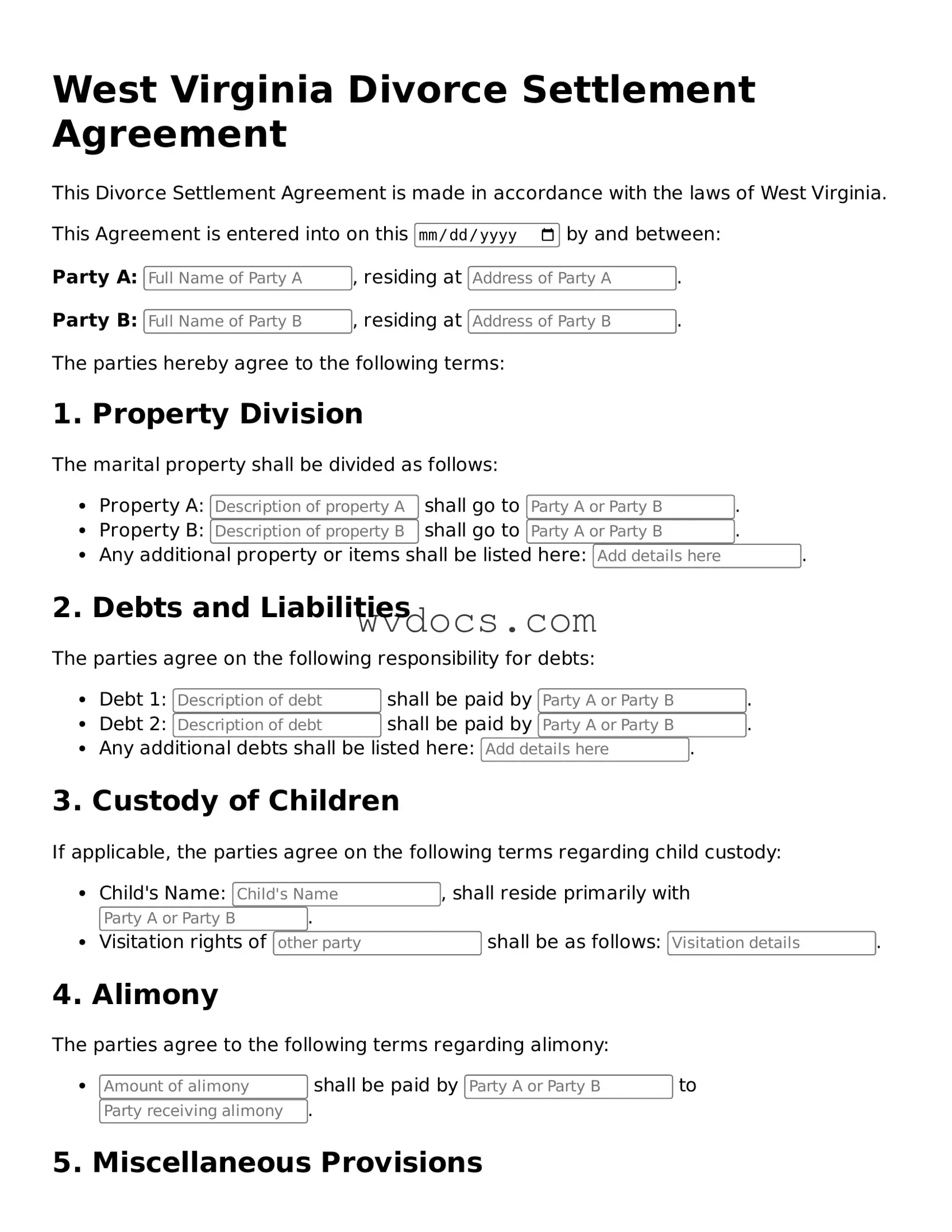The West Virginia Divorce Settlement Agreement form shares similarities with a Marital Settlement Agreement. Both documents serve as a comprehensive outline of the terms agreed upon by spouses during a divorce. They cover crucial aspects such as division of property, alimony, child custody, and support. The Marital Settlement Agreement is often used in various states, providing a structured approach to resolving disputes amicably and ensuring that both parties understand their rights and obligations.
Another related document is the Separation Agreement. This document is often utilized when couples decide to live apart before finalizing their divorce. Like the Divorce Settlement Agreement, it details the arrangement for property division, child custody, and support. The key difference lies in its use during the separation phase, allowing couples to outline their responsibilities while still legally married.
The Parenting Plan is another document that aligns closely with the Divorce Settlement Agreement. It specifically focuses on child custody and visitation arrangements. While the Divorce Settlement Agreement may include provisions for children, the Parenting Plan delves deeper into parenting responsibilities, schedules, and decision-making authority, ensuring that the best interests of the child are prioritized.
A Property Settlement Agreement also bears resemblance to the Divorce Settlement Agreement. This document is primarily concerned with the division of marital assets and debts. While the Divorce Settlement Agreement encompasses broader terms, including child custody and support, the Property Settlement Agreement specifically addresses how property will be divided, making it a critical component of the divorce process.
The Affidavit of Support is another document that can be related to the Divorce Settlement Agreement, particularly in cases involving immigration. While it is primarily used to demonstrate financial support for a spouse seeking a visa, it may also be referenced during divorce proceedings if financial obligations are in question. This document ensures that one party can support the other, which may influence alimony decisions.
The Child Support Agreement is similar to the Divorce Settlement Agreement in that it specifically outlines financial support for children. While the Divorce Settlement Agreement may include general provisions for child support, the Child Support Agreement provides detailed calculations based on income and expenses. This ensures that both parents understand their financial responsibilities toward their children.
For those looking to establish a solid foundation for their LLC, the Florida comprehensive Operating Agreement guidelines are invaluable. This form outlines critical aspects of governance and operational structure, promoting clarity among members and preventing potential disputes.
The Alimony Agreement is another document that aligns with the Divorce Settlement Agreement. This document specifically addresses spousal support, detailing the amount and duration of payments. While the Divorce Settlement Agreement may include alimony provisions, the Alimony Agreement focuses solely on this aspect, providing clarity and enforceability regarding financial support obligations.
The Final Judgment of Divorce is a court document that formalizes the terms agreed upon in the Divorce Settlement Agreement. Once the settlement is approved by the court, the Final Judgment outlines the legal dissolution of the marriage and incorporates the terms from the settlement. This document serves as the official record of the divorce, ensuring that all agreements are enforceable under law.
Lastly, the Joint Petition for Divorce is a document that initiates the divorce process when both parties agree to the terms of their separation. It often references the Divorce Settlement Agreement, as it outlines the mutual consent of both spouses to proceed with the divorce based on the agreed-upon terms. This document streamlines the process, allowing for a more amicable resolution.
